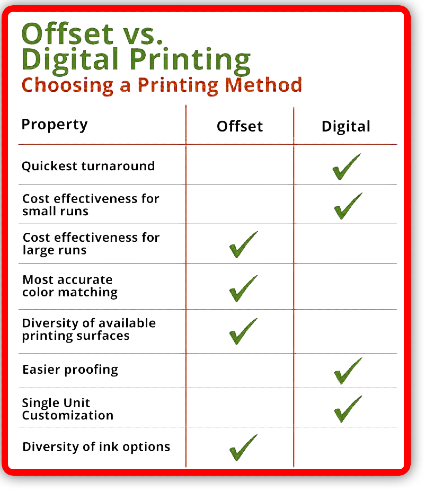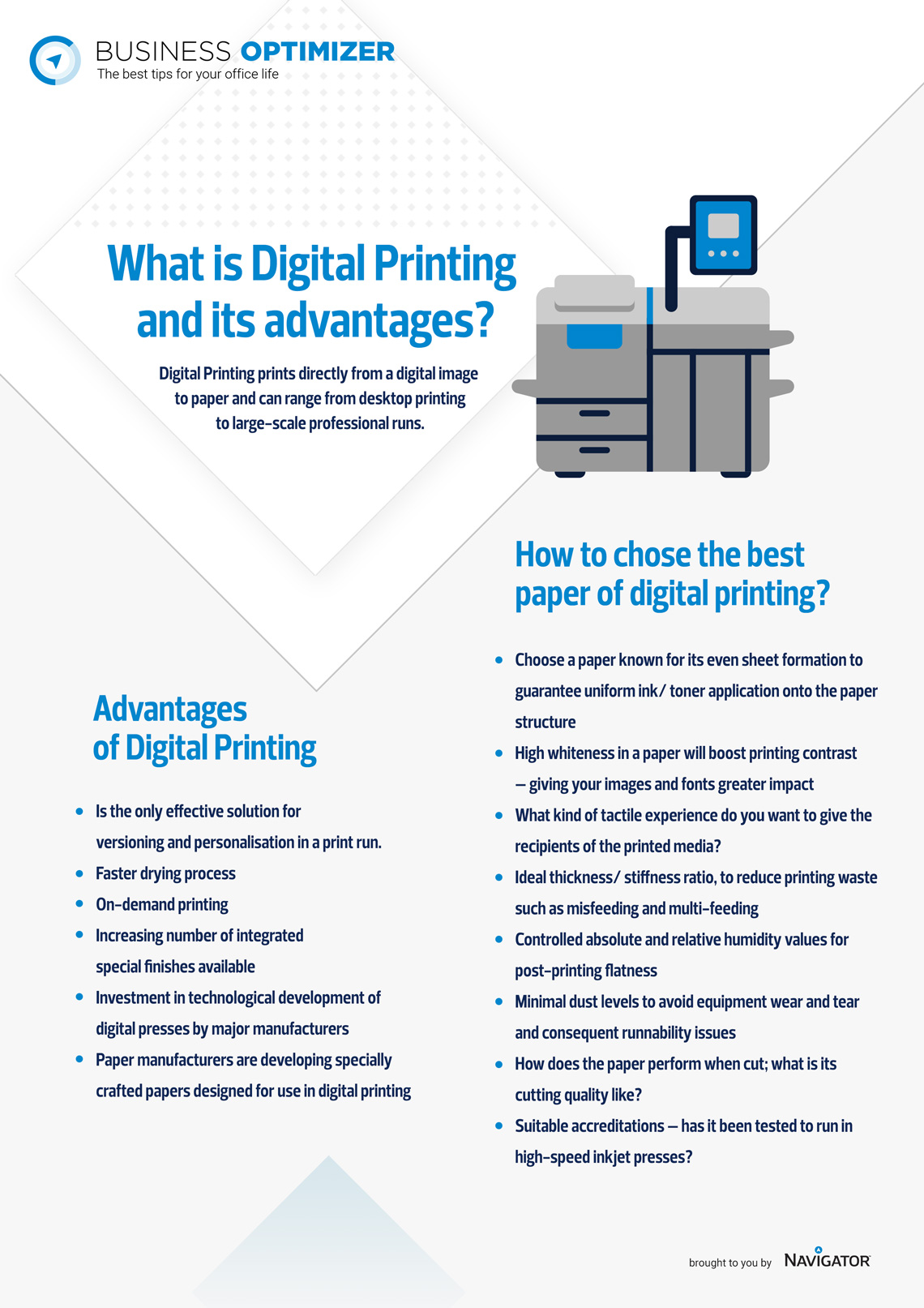What Does Digital Printing Mean?
What Does Digital Printing Mean?
Blog Article
Digital Printing - An Overview
Table of ContentsSee This Report about Digital Printing3 Easy Facts About Digital Printing ExplainedThe Ultimate Guide To Digital PrintingDigital Printing Can Be Fun For AnyoneLittle Known Questions About Digital Printing.Facts About Digital Printing Uncovered
Variable data printing, such as direct mail with individualized codes and addresses, is ideally suited for electronic printing. Digital quick printing only requires four actions of design, testimonial, printing and binding to get everything done. Digital quick printing has an unrivaled advantage: print on demand.According to PMMI, electronic printing enables brand names and suppliers to respond rapidly to client demands while enhancing the supply chain, minimizing warehousing cost and waste, and delighting in faster time to market. That all noises fantastic, however just how does this technology do all that? The major differentiator of these modern technologies is that there are no set up costs and no plates with digital printing.
All About Digital Printing
This results in quicker turnaround time and lowers cost when using digital printing.
Quick production suggests getting your product to market quicker. It additionally indicates it's much easier and faster to make adjustments later on, when you alter a recipe, include a SKU, or create seasonal product packaging. Digital printing is extremely flexible, so it's very easy to make adjustments to the plan layout quickly. All of it returns to the plates.
Much more supply can mean even more waste in the future. With traditional printing techniques, short-run printing is just not possible. Due to the fact that a great layout can make or break your item, digital printing consistently produces top quality, clear and vibrant graphics each time. Digital printing on flexible pouches includes the bright, lively, and accurate graphics that almost beckon customers to connect and touch them.
Digital printing is the procedure of printing digital-based pictures directly onto a variety of media substrates. There is no requirement for a printing plate, unlike with balanced out printing. Digital data such as PDFs or desktop posting files can be sent straight to the digital printing machine to publish theoretically, image paper, canvas, fabric, synthetics, cardstock and various other substratums.
How Digital Printing can Save You Time, Stress, and Money.
According to PMMI, electronic printing enables brands and manufacturers to react promptly to customer needs while boosting the supply chain, lowering warehousing price and waste, and delighting in faster time to market. That all audios wonderful, but exactly how does this modern technology do all that? The significant differentiator of these innovations is that there are no set up charges and no plates go to these guys with electronic printing.
This results in quicker turnaround time and lowers expense when utilizing electronic printing.

What Does Digital Printing Do?
With conventional printing techniques, short-run printing is just not feasible. Due to the fact that an excellent layout can make or damage your item, electronic printing continually creates top notch, clear and vibrant graphics each time.

According to PMMI, electronic printing permits brands and makers to respond swiftly to client needs while enhancing the supply chain, minimizing warehousing price and waste, and appreciating faster time to market. That all audios wonderful, but just how does this technology do all that? The major differentiator of these innovations is that there are no set up fees and no plates with electronic printing.
7 Simple Techniques For Digital Printing
According to Wikipedia, the best distinction between digital printing and conventional approaches such over at this website as lithography, flexography, gravure, or letterpress is that there is no demand to change printing plates in digital printing, whereas in these analog printing techniques the plates are repetitively changed. This causes quicker turnaround time and reduces expense when making use of electronic printing.
Digital printing is highly versatile, so it's simple to make adjustments to the bundle design promptly. It all goes back to the plates.

Not known Details About Digital Printing
Digital printing is the process of printing digital-based images straight onto a selection of media substrates. There is no requirement for a printing plate, unlike with countered printing. Digital files such as PDFs or desktop posting data can be sent out straight to the digital printing press to publish theoretically, picture paper, canvas, fabric, synthetics, cardstock and various other substratums.
Report this page